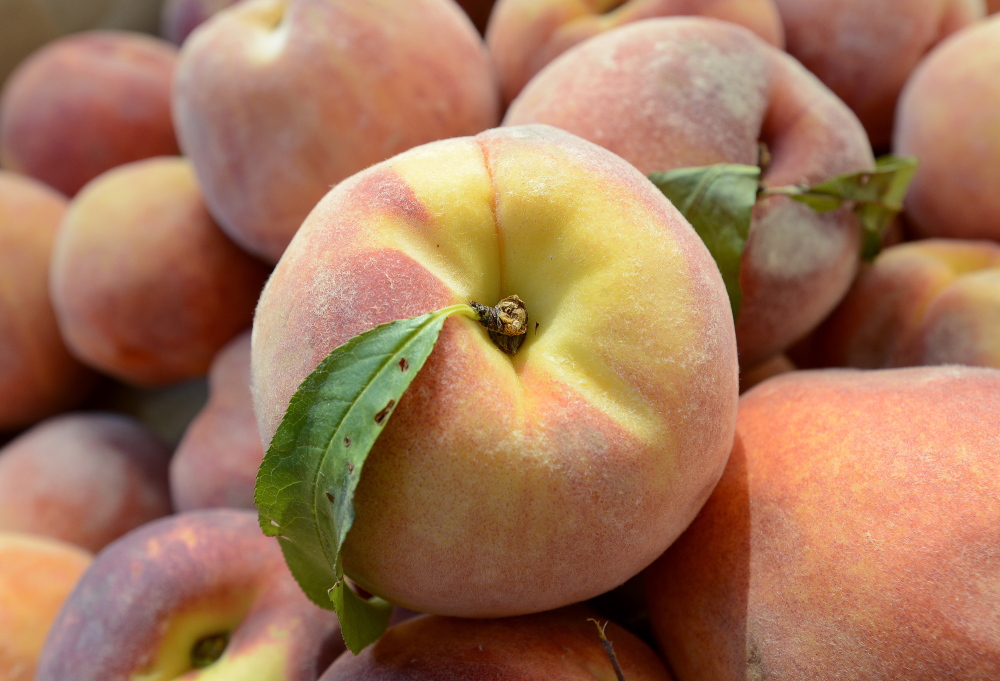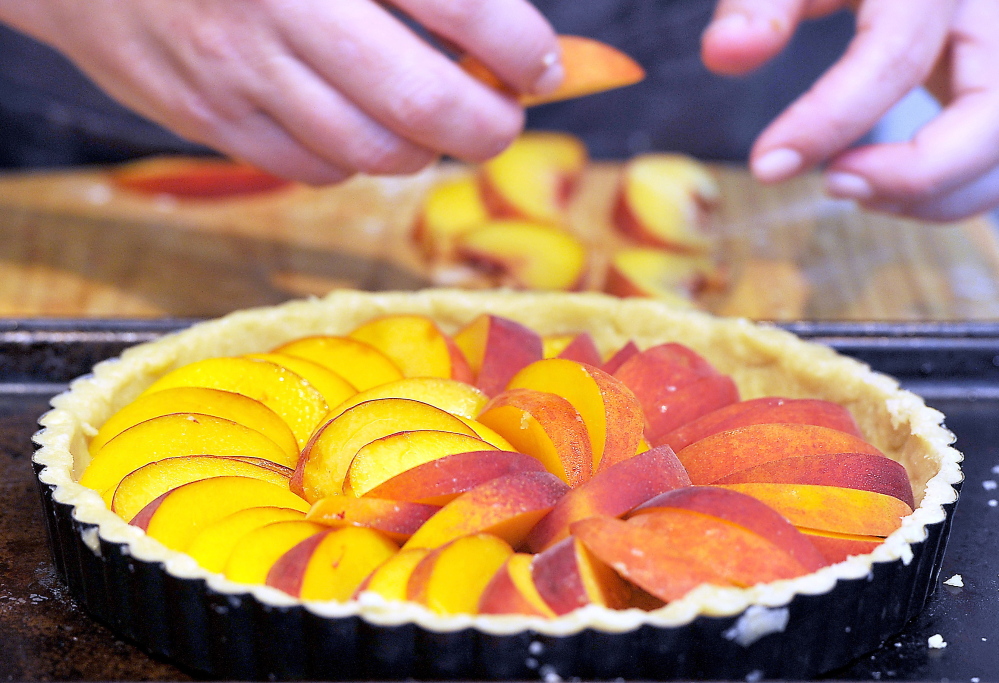Peaches don’t grow at all in northern Maine, are rare in the central part of the state and need ideal conditions to grow even south of Portland. In Maine, many peach growers are actually apple growers, who grow the stone fruit as a novelty.
Peaches may love Georgia and South Carolina – both states claim the peach as their state fruit – but they are finicky in Maine soil. They loathe long, cold winters (even the hardier varieties, like Canadian Harmony, Contender and Reliance, can struggle) and are highly susceptible to both insect damage and brown rot. The latter “grows quickly,” said Guy Paulin of Brackett’s Apple Orchard in Limington, whose family grows 125 peach trees among its 5,000 apple trees. “You can lose the peaches in a heartbeat.”
That’s part of the reason, no doubt, that few, if any, locally grown organic peaches are grown for sale in Maine.
Rather, peach growers use conventional farming practices, such as “low spraying,” (as the industry calls it) of pesticides and fungicides, as well as integrated pest management techniques.
“You can have a peach tree in your own backyard without using these techniques, but it’s nearly impossible to produce a commercial peach crop in Maine without them,” said Renae Moran, a tree fruit researcher and professor at the University of Maine.
So some amount of spraying, yes, but on the other hand Maine peaches do not require trucking in from afar, which raises its own environmental questions.
If there are often no simple answers about what’s best for the environment, there is easy eating: Local peaches are at their peak right now. And they are especially sweet, says Jeff Walker, owner of Pine View Orchard in Berwick, because they are ripened on the tree, which lets the natural sugars build up in the fruit. (Peaches shipped from out of state are picked early and it’s hard to keep them from bruising during transport.)
This year, Maine peaches are especially precious, as yields are down 50 percent to 80 percent from last year’s bumper crop, according to several local growers. Blame the cold, lingering winter.
Or forget about blame, and just enjoy this tart, perfect for any local peaches you are lucky enough to score.
ALMOND-PEACH TART
This recipe is adapted from “The Food52 Cookbook, Volume 2: Seasonal Recipes From Our Kitchens to Yours.” You can replace the almond meal with the same amount of flour and the almond extract with vanilla extract. The tart is delicious with whipped cream.
Makes one 11-inch tart; serves 8
1¼ cups plus 2 tablespoons all-purpose flour
¼ cup almond flour or meal
¾ teaspoon kosher salt
¾ cup plus 1 teaspoon sugar
¼ cup canola oil
¼ cup mild olive oil
2 tablespoons whole milk
½ teaspoon almond extract
2 tablespoons cold, unsalted butter, cut into ½-inch pieces
1 pound Maine peaches (about 3 medium or 5 small peaches), pitted and thickly sliced
Preheat the oven to 425 degrees.
In a medium bowl, whisk together 1¼ cups all-purpose flour, almond flour, ½ teaspoon salt and 1 teaspoon sugar.
In a small bowl, whisk together the oils, milk and almond extract. Pour the wet mixture into the dry ingredients. Mix gently with a fork just enough to dampen flours. Dump the dough into the middle of an 11-inch tart pan. Use your hands to pat out the dough to cover the bottom of the pan. Push the dough up the sides to meet the edge. The crust should be about 1/8-inch thick all around.
In the bowl you just used, combine the remaining ¾ cup sugar, remaining 2 tablespoons all-purpose flour, remaining ¼ teaspoon salt and the butter. (If your peaches are especially juicy, add 1 tablespoon additional flour.) Pinch the butter into the ingredients until crumbly.
Starting at the outside edge of the crust, arrange the peaches overlapping in a concentric circle over the pastry; fill in the center in whatever pattern you like. The peaches should fit snugly. Sprinkle the crumbly butter mixture over the peaches – it will seem like a lot.
Bake the tart for 35 to 45 minutes, until shiny, thick bubbles begin enveloping the fruit and the crust is slightly brown. Cool on a rack. Serve warm or room temperature, preferably with generous dollops of whipped cream.
Send questions/comments to the editors.




